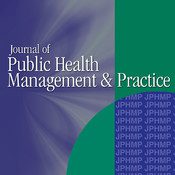Study Shows Wage Inequity Between Registered Nurses Working in Local Health Departments, Hospitals

The average hourly wage for registered nurses (RNs) working for local health departments (LHDs) is significantly lower than RNs working at hospitals in the same county market, according to a new study by scholars at the University of North Carolina at Charlotte and University of Washington in Seattle.
Dr. Michele Issel, Professor at University of North Carolina at Charlotte, and Dr. Betty Bekemeier, Associate Professor at University of Washington in Seattle, recently published the study in the Journal of Public Health Management and Practice; The study was funded in part by HRSA Bureau of Health Professions, Division of Nursing, under the Nurse Education, Practice and Retention Program.
On average, LHDs paid significantly less than hospitals in their markets, at all levels of RN experience. The PHN average hourly wage across the LHDs was $20.10 in 2010, and $21.60 in 2014. The wage gap between LHD and hospital RNs was most dramatic after 18 years of experience; PHN salaries were $14.44 per hour less than for hospital RNs with comparable years of experience. Although the wage for PHNs increased from 2010 to 2014, it was $.22 less than expected with inflation. Salary compression was evident in 2010 and worsened for PHNs in 2014, when compared to hospital RNs.
To assess wages from a market perspective, Drs. Issel and Bekemeier collected wage and benefit information directly from health care organizations. Within each county, the LHD and all hospitals constituted a “market.” 12 markets were included in the study sample. Human resources representatives from each of the 12 LHDs and from all hospitals within those 12 counties were invited to participate. Survey questions asked about common human resources benefits and wage packages, such as differential pay, hourly rate paid based on years of experience, components of benefit packages (e.g., sick and vacation leave), and reimbursement for education. They collected from the same organizations in 2010 and again in 2014. The researchers were then able to compare the mean differences of RN wages in the LHD and in the hospitals, with sub-analyses looking at wages across years of experience.
Given that RNs working in LHDs comprise a large segment of the public health workforce, attention to factors affecting recruitment and retention is important. Although LHDs often benchmark their wages against other LHDs, a market approach is more appropriate when addressing workforce issues. In particular, understanding PHN wages from a market perspective involves consideration of contextual or environmental variables which may be influencing wages for all RNs within a labor market. A labor market perspective focuses on the supply and the demand for RNs as employees. This perspective contrasts with beliefs in the public health sector that RNs working in LHDs as PHNs accept lower wages because of factors other than market demand.
The growing wage gap is occurring even as more highly skilled PHNs are needed (and difficult to hire) in the advent of the ACA and as LHD shifts focus toward more community and population health. PHN salary structures and benefits are worrisome and no improvements have been observed over the recent past, particularly in relationship to other employers in the same labor market as LHDs. According to the authors, the findings reinforce the need for dramatic changes in funding support of U.S. public health infrastructure.